Healthcare Guidance
Medicaid Health Plans for Your CDPAP Homecare Journey
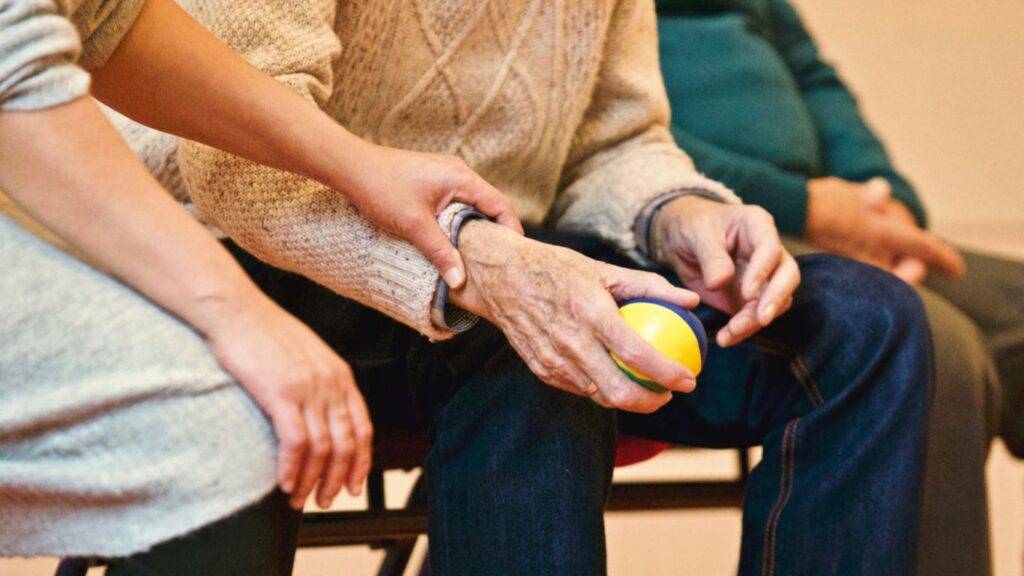
In the realm of personalized homecare through the Consumer Directed Personal Assistance Program (CDPAP), having the right Medicaid health plan is paramount. It’s not just about coverage; it’s about aligning your healthcare benefits with the unique demands of CDPAP. Join us on a journey as we explore and unveil the best Medicaid health plans that can seamlessly integrate with your CDPAP homecare experience.
Why Your Choice of Medicaid Health Plan Matters in CDPAP Homecare?
CDPAP empowers individuals to direct their own care, choosing their caregivers and tailoring their support network. This level of autonomy calls for a Medicaid health plan that not only covers the basics but goes above and beyond to support a holistic approach to well-being.
The All-Inclusive Advantage: Managed Care Plans
Managed Care Plans under Medicaid provide a comprehensive approach to healthcare. From preventive services to specialized care, these plans often offer a diverse network of healthcare professionals, ensuring that your CDPAP homecare needs are met with precision.
Flexibility and Freedom: Fee-for-Service Plans
For those who value flexibility, Fee-for-Service Plans can be a game-changer. These plans allow you to choose your healthcare providers, fostering a sense of control that aligns seamlessly with the principles of CDPAP.
Specialized Care and Beyond: Specialty Medicaid Health Plans
Certain health plans cater specifically to individuals with unique healthcare needs. Whether you require specialized therapies, ongoing treatments, or access to a network of specialists, these plans ensure that your CDPAP homecare journey is supported at every level.
Beyond Medical: Exploring Additional Benefits
The best Medicaid health plans don’t just stop at medical coverage. Dental care, vision services, and mental health support are crucial components of holistic well-being. Discover how you can maximize your benefits to enhance your CDPAP homecare experience.
Navigating the Enrollment Process with Ease
Choosing the best Medicaid health plan involves understanding your unique needs and the intricacies of each plan. This section provides a step-by-step guide to help you navigate the enrollment process seamlessly, ensuring that your CDPAP homecare journey is well-supported.
Staying Informed
Healthcare is an evolving landscape, and Medicaid health plans can undergo changes. Stay informed about updates, policy changes, and new benefits to ensure that your chosen plan continues to align with your CDPAP home care requirements.
Elevating Your CDPAP Homecare Experience with the Best Medicaid Health Plans
Your journey with CDPAP homecare deserves the best, and that includes choosing a Medicaid health plan that complements your unique needs and preferences. With the right plan in place, you can enjoy a seamless integration of healthcare benefits into your self-directed care approach, ensuring that your CDPAP experience is truly exceptional. Explore, choose wisely, and embark on a path to optimal well-being with the best Medicaid health plan for your CDPAP homecare journey.
5 Vital Signs of Patient's Health

As a caregiver, your role extends beyond providing companionship and assistance with daily activities. Monitoring and understanding the vital signs of a patient’s health is a crucial aspect of ensuring their well-being. In this blog, we’ll explore the significance of vital signs and equip you with the knowledge to effectively track and respond to changes in your loved one’s health.
What are Vital Signs?
Vital signs are key indicators of the body’s functions and overall health. The four primary vital signs are body temperature, heart rate (pulse), respiratory rate, and blood pressure. Regular monitoring of these signs provides valuable insights into the patient’s physiological status.
Body Temperature
What It Is: Body temperature is a measure of the internal heat produced and regulated by the body. It is a critical indicator of overall health.
How to Measure: Use a reliable thermometer, either oral, ear, forehead, or underarm, to obtain an accurate temperature reading. Make sure to follow the instructions specific to the thermometer used.
Normal Range: A normal body temperature typically falls within the range of 97.8°F (36.5°C) to 99.1°F (37.3°C). Deviations from this range may indicate an underlying health issue.
What to Watch For: A fever, indicated by a temperature above the normal range, could suggest infection or inflammation. On the other hand, consistently low body temperature may be a sign of hypothermia.
Heart Rate (Pulse)
What It Is: The pulse is a measure of the heart’s beats per minute, reflecting the efficiency of the cardiovascular system.
How to Measure: Locate a pulse point, typically found at the wrist or neck. Count the beats for a full minute or multiply the count by four for a quicker assessment.
Normal Range: A normal resting heart rate for adults falls between 60 and 100 beats per minute. Athletes and well-conditioned individuals may have lower resting heart rates.
What to Watch For: Significant deviations from the normal range may indicate cardiovascular concerns, stress, or other health issues.
Respiratory Rate
What It Is: Respiratory rate measures the number of breaths taken per minute, reflecting the efficiency of the respiratory system.
How to Measure: Observe the rise and fall of the chest for a full minute, counting each breath. Alternatively, count for 30 seconds and multiply by two.
Normal Range: A normal respiratory rate for adults typically ranges from 12 to 20 breaths per minute. Changes in respiratory rate can be influenced by factors such as age and activity level.
What to Watch For: Changes in respiratory rate, especially if consistently elevated, may indicate respiratory distress, lung issues, or other respiratory concerns.
Blood Pressure
What It Is: Blood pressure measures the force of blood against the walls of arteries during both heartbeats and rest.
How to Measure: Blood pressure is expressed as two numbers: systolic (top number) and diastolic (bottom number). A blood pressure monitor is used to measure these values.
Normal Range: A standard blood pressure reading is around 120/80 mm Hg. The systolic value represents pressure during heartbeats, while the diastolic reflects pressure during rest between beats.
What to Watch For: Deviations from the normal range may indicate hypertension (high blood pressure) or hypotension (low blood pressure), both of which require attention and potential intervention.
Consistency and Trends
Why It Matters: Regular monitoring of vital signs is essential to establish a baseline and detect any changes over time. Consistency and trends in vital signs provide valuable information about overall health and potential issues.
How to Do It: Establish a routine for taking measurements, whether it’s daily, weekly, or as recommended by healthcare professionals. Keep a record of measurements, noting any patterns or deviations.
What to Watch For: Consistent changes or patterns may indicate potential health issues. For example, a gradual increase in blood pressure over time may suggest the need for intervention or lifestyle adjustments.
Understanding these vital signs empowers caregivers to actively participate in the well-being of their loved ones. Consistent monitoring, coupled with open communication with healthcare professionals, ensures that any changes in these vital signs are promptly addressed, contributing to the overall health and quality of life of the individual under your care.
Caring Guides for a Family Member with Cancer

Cancer is a challenging journey, not just for the person diagnosed but for their entire support system. As a caregiver for a family member with cancer, your role is pivotal in providing both physical and emotional support. This blog aims to be your guide, offering insights and practical advice on how to navigate the complexities of caring for a loved one facing this formidable challenge.
Understanding the Diagnosis: A Foundation for Care
The first step in effective caregiving is to understand the nature of the cancer diagnosis. Educate yourself about the type of cancer, treatment options, potential side effects, and the prognosis. Being well-informed empowers you to make informed decisions and provide better support.
Open and Honest Communication
Establishing open lines of communication is essential. Encourage your family members to share their thoughts, concerns, and preferences regarding their care. Actively listen, and foster an environment where honest conversations can take place. Clear communication lays the groundwork for a supportive caregiving relationship.
Building a Support Network
You don’t have to navigate this journey alone. Reach out to friends, family, and support groups to build a network of understanding individuals who can offer emotional support, share experiences, and provide practical assistance when needed. Connecting with others who have faced similar situations can be particularly beneficial.
Addressing Practical Needs: Medical Appointments and Documentation
Assist your family member in organizing and attending medical appointments. Keep track of medications, treatment plans, and important contact information. A well-organized system can reduce stress and ensure that crucial details are readily available.
Balancing Emotional Well-being
Cancer not only affects the body but also takes a toll on emotional well-being. Be attuned to your family member’s emotional needs and encourage them to express their feelings. Seek the assistance of counselors or support groups to provide additional emotional support during this challenging time.
Nurturing Physical Well-being
Support your family member in maintaining a healthy lifestyle. This includes a balanced diet, regular exercise as permitted by their health condition, and sufficient rest. Consult with healthcare professionals to create a plan that aligns with their treatment and overall well-being.
Respecting Autonomy: Empowering Your Loved One
While providing care is your primary role, it’s essential to respect your family member’s autonomy. Involve them in decision-making processes related to their care and allow them to express their preferences. This empowerment contributes to a more positive caregiving dynamic.
Anticipating and Managing Side Effects
Many cancer treatments come with side effects. Educate yourself about potential side effects and work with healthcare professionals to anticipate and manage them effectively. Being prepared helps you provide better care and alleviates stress for both you and your family member.
Recognizing Caregiver Burnout
Caring for a family member with cancer is emotionally and physically demanding. Recognize the signs of caregiver burnout, such as exhaustion, irritability, or a sense of hopelessness. Take breaks when needed, seek respite care, and prioritize your own well-being to provide sustainable care.
Celebrating Moments of Joy
Amidst the challenges, find and celebrate moments of joy. Whether it’s a small achievement, a shared laughter, or a memorable experience, these moments contribute to the emotional resilience of both the caregiver and the person facing cancer.
A Compassionate Guide for Your Caregiving Journey
Caring for a family member with cancer is a profound and compassionate journey. By understanding the nuances of their diagnosis, fostering open communication, building a robust support network, and prioritizing well-being, you become a guiding light in their path. Your role as a caregiver is invaluable, and this guide is here to support you as you navigate the complexities of caring for a loved one.
Changing Adult Diapers

Caring for adults who require assistance with daily living activities, including changing diapers, is a responsibility that many caregivers face with compassion and dedication. While it might seem like a straightforward task, changing adult diapers involves more than just the physical act. This guide aims to provide caregivers with practical insights and essential tips for navigating the process with sensitivity and efficiency.
Establishing a Comfortable Environment
Creating a comfortable and private space is crucial for both the caregiver and the individual. Ensure the room is well-lit and adequately equipped with the necessary supplies, such as disposable gloves, wipes, and a clean surface.
Communication and Dignity
Open communication is key. Before initiating the diaper change, communicate with the individual, explaining the process and respecting their dignity. Always seek consent and involve them in the process as much as possible, ensuring they feel respected and in control.
Gather Necessary Supplies
Be organized and gather all the supplies beforehand to streamline the process. This includes clean diapers, wipes, disposable gloves, a plastic bag for disposal, and any additional items specific to the individual’s needs.
Positioning for Comfort
Carefully assist the individual into a comfortable position, whether lying down or sitting. Ensure their comfort and safety throughout the process, making any necessary adjustments to accommodate their mobility or physical condition.
Efficient Removal of Soiled Diaper
When removing the soiled diaper, handle the process with care and efficiency. Use disposable gloves, and gently clean the area with wipes. Pay attention to skin health, checking for signs of irritation or redness.
Thorough Cleaning and Skin Care
A thorough cleaning routine is essential to prevent skin issues. Use gentle wipes or a mild cleanser, and pat the skin dry before putting on a fresh diaper. Applying a protective barrier cream can help prevent skin irritation.
Applying a Fresh Diaper
Choose an appropriately sized and absorbent diaper for the individual. Ensure a snug but comfortable fit to prevent leaks. Be mindful of any elastic tabs or closures to secure the diaper in place.
Engage in Post-Diapering Communication
After completing the diaper change, engage in post-diapering communication. Check-in with the individual, addressing any concerns or discomfort they may have. Reinforce your commitment to their well-being, maintaining a supportive and caring atmosphere.
Changing adult diapers is a fundamental aspect of caregiving that requires a delicate balance of efficiency and empathy. By approaching the process with respect, clear communication, and attention to the individual’s comfort, caregivers can contribute to maintaining the dignity and well-being of those under their care.
Nutritious Dishes for Senior Family Members

As our loved ones age, their nutritional needs evolve, requiring a thoughtful approach to meal planning that promotes health and well-being. In this comprehensive guide, we will explore a variety of nutritious dishes tailored specifically for senior family members. From considerations for dietary restrictions to tips for enhancing flavor and appeal, let’s embark on a journey to ensure our elderly loved ones enjoy both the nourishment and joy that well-crafted meals can bring.
Understanding Senior Nutrition
Before delving into specific recipes, it’s crucial to understand the unique nutritional requirements of seniors. Aging often comes with changes in metabolism, digestion, and taste, making it essential to focus on nutrient-dense foods that support overall health. Key nutrients include fiber, calcium, vitamin D, and protein, which play vital roles in maintaining bone health, muscle mass, and immune function.
Recipe Ideas for Balanced Meals
Salmon and Quinoa Salad:
- Rich in omega-3 fatty acids for brain health.
- Quinoa provides protein and essential amino acids.
- Incorporate colorful vegetables for added vitamins and minerals.
Vegetable Stir-Fry with Tofu:
- High in protein from tofu, supporting muscle strength.
- A variety of vegetables for fiber and antioxidants.
- Light soy or ginger sauce for flavor without excess sodium.
Chicken and Sweet Potato Casserole:
- Lean chicken for protein and zinc.
- Sweet potatoes for complex carbohydrates and beta-carotene.
- It’s a comforting dish that’s easy to chew and digest.
Mango and Yogurt Parfait:
- Greek yogurt for probiotics and calcium.
- Mango provides natural sweetness and vitamin C.
- A delightful dessert or snack option.
Considerations for Dietary Restrictions
It’s crucial to be mindful of any dietary restrictions or health conditions that your senior family members may have. For those with diabetes, focus on recipes with low glycemic index ingredients. Individuals with dietary restrictions may require modifications, so consult with healthcare professionals to ensure meal plans align with specific health needs.
Enhancing Flavor and Appeal
Seniors may experience changes in taste buds, leading to a reduced sense of taste. Combat this by incorporating herbs, spices, and flavorful ingredients. Experiment with different cooking methods, such as roasting or grilling, to enhance the natural flavors of ingredients. Additionally, presentation plays a significant role in stimulating appetite, so consider vibrant colors and appealing plating techniques.
In providing nutritious and delicious meals for our senior family members, we not only contribute to their physical well-being but also create opportunities for shared joy and connection. By understanding their nutritional needs, considering dietary restrictions, and focusing on flavor and appeal, we can make mealtime a fulfilling and enjoyable experience for our loved ones in their golden years. Let’s celebrate the journey of aging with wholesome and nourishing dishes that reflect the love and care we have for our family members.
Care Approaches for Kidney Stones in Elderly Individuals

Caring for an elderly individual with kidney stones presents unique challenges for caregivers. The discomfort and potential complications associated with this condition require a thoughtful and tailored approach to caregiving. In this blog post, we explore care approaches specifically designed for elderly individuals dealing with kidney stones, providing guidance for caregivers on how to navigate and support their loved ones through this medical journey.
Understanding Kidney Stones in the Elderly
Kidney stones, while common, can manifest differently in the elderly. Caregivers must first familiarize themselves with the nuances of kidney stones in older adults, recognizing potential symptoms, and understanding the impact of age-related factors on the condition.
Hydration and Diet
Encouraging proper hydration is essential in preventing and managing kidney stones. Caregivers should work with healthcare professionals to establish a hydration plan and dietary adjustments that suit the specific needs and restrictions of the elderly individual.
Pain Management
Kidney stones can be painful, and elderly individuals may experience heightened discomfort. Caregivers should collaborate with healthcare providers to develop a pain management plan that considers the unique health conditions and sensitivities of the elderly.
Medication Management
Ensure that prescribed medications are taken as directed. This may include pain relievers, medications to relax the ureter, or antibiotics if an infection is present. Caregivers play a crucial role in medication management, providing timely doses and monitoring for any adverse reactions.
Mobility and Assistance
Kidney stones can impact an elderly individual’s mobility. Caregivers should be attuned to any changes in their loved one’s ability to move comfortably and provide necessary assistance. Creating a safe and accessible environment is key to preventing accidents.
Communication with Healthcare Providers
Open communication with healthcare professionals is paramount. Caregivers should actively participate in medical appointments, share observations about their loved one’s condition, and seek clarification on treatment plans to ensure a comprehensive understanding of the care approach.
Emotional Support
Dealing with kidney stones can be emotionally taxing for the elderly. Caregivers should offer empathy, a listening ear, and reassurance. Emotional support is integral to the overall well-being of the elderly individual during this challenging time.
Follow-up Care and Prevention
Kidney stone management is an ongoing process. Caregivers should facilitate regular follow-up appointments, diagnostic tests, and adhere to preventive measures recommended by healthcare providers to minimize the risk of recurrent stones.
By understanding the specific needs of older adults and collaborating closely with healthcare professionals, caregivers can play a pivotal role in enhancing the quality of care and comfort for their loved ones. This journey may present challenges, but with dedication, communication, and a tailored care plan, caregivers can make a significant positive impact on the well-being of elderly individuals dealing with kidney stones.
Top Nursing Homes in New York
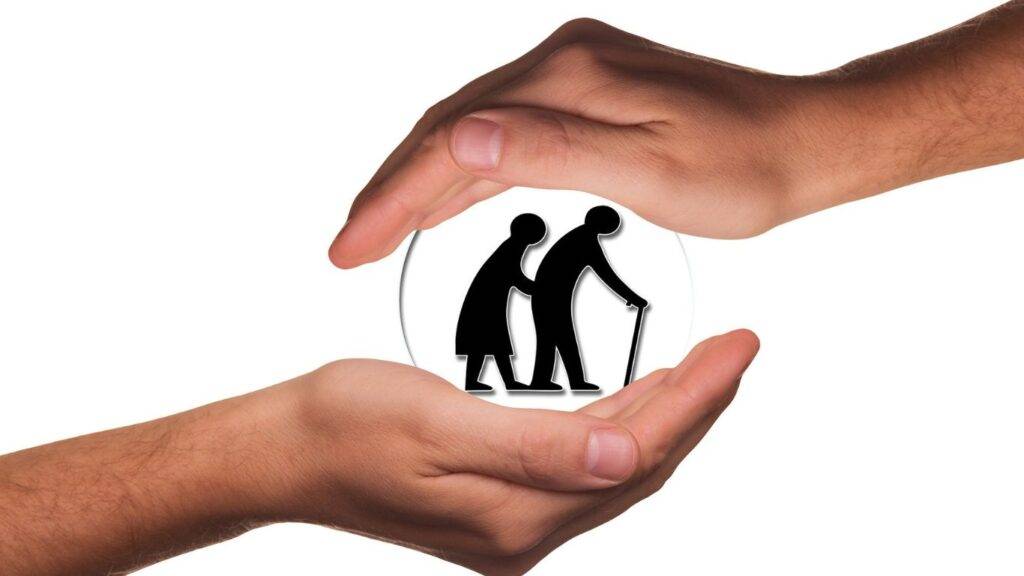
Choosing the right nursing home for a loved one is a significant decision that involves careful consideration of various factors. In the vibrant and diverse landscape of New York, finding a top-tier nursing home can be a reassuring step toward ensuring exceptional senior care. In this blog post, we delve into some of the top nursing homes in New York, highlighting their features and commitment to providing exemplary care for the elderly.
Isabella Geriatric Center (New York, NY)
Located in the heart of Manhattan, the Isabella Geriatric Center is renowned for its comprehensive care services. From skilled nursing to rehabilitation, Isabella is committed to enhancing the well-being of its residents. The center is known for its state-of-the-art facilities and compassionate staff.
The Hebrew Home at Riverdale (Bronx, NY)
The Hebrew Home at Riverdale is a nationally recognized senior care facility. With a focus on person-centered care, this nursing home provides a range of services, including long-term care, rehabilitation, and memory care. The picturesque campus and dedication to individualized attention make it stand out.
Sarah Neuman (Mamaroneck, NY)
Part of the MJHS Health System, Sarah Neuman is a skilled nursing facility known for its commitment to holistic care. The facility offers specialized programs for Alzheimer’s and dementia care, emphasizing a supportive and engaging environment for residents.
Island Nursing and Rehab Center (Holtsville, NY)
Serving Suffolk County, the Island Nursing and Rehab Center is recognized for its skilled nursing and rehabilitation services. The facility strongly emphasizes personalized care plans and features a team of dedicated healthcare professionals.
Gurwin Jewish Nursing & Rehabilitation Center (Commack, NY)
Gurwin is a nonprofit nursing and rehabilitation center known for its high standard of care. With a focus on enriching the lives of residents, Gurwin offers a range of services, including short-term rehabilitation, long-term care, and memory care.
New York-Presbyterian Allen Hospital (New York, NY)
Affiliated with one of the premier medical institutions in the city, New York-Presbyterian Allen Hospital offers skilled nursing and rehabilitation services. The facility is known for its integration with advanced medical resources and a commitment to providing compassionate care.
Atria West 86 (New York, NY)
Atria West 86 is an assisted living facility in the Upper West Side, that provides a supportive environment for seniors. With a focus on fostering a sense of community, Atria offers personalized care plans, engaging activities, and a vibrant living space.
Choosing a nursing home involves considering individual needs, preferences, and the reputation of the facility. The top nursing homes in New York-listed here are just a snapshot of the diverse and high-quality options available in the state. Families embarking on this journey can take comfort in knowing that these facilities prioritize the well-being and comfort of their residents, offering a caring haven for those in their golden years.
Common Health Concerns in the Elderly

As we gracefully age, our bodies undergo various changes, and with these changes come a set of common health concerns that tend to accompany the golden years. In this blog, we’ll delve into some of the prevalent health issues that the elderly often face, offering insights into understanding, managing, and promoting overall well-being.
Cardiovascular Health: The Beat of Longevity
Cardiovascular diseases, including heart disease and stroke, are frequent companions in the aging journey. Exploring the importance of maintaining a heart-healthy lifestyle through proper nutrition, regular exercise, and routine check-ups becomes crucial in mitigating these concerns.
Joint Pains and Arthritis: Navigating the Aches of Aging
Aching joints and arthritis can be significant contributors to reduced mobility among the elderly. We’ll discuss strategies for managing joint pain, the role of exercise and physical therapy, and innovations in pain management that provide relief and improve quality of life.
Cognitive Decline: Exercising the Mind
Cognitive health is a paramount concern for the elderly, with conditions such as Alzheimer’s and dementia affecting many. This section will explore brain-boosting activities, lifestyle choices, and advancements in cognitive healthcare that can potentially slow down cognitive decline.
Osteoporosis: Building Strong Foundations
Fragile bones and the risk of fractures become more pronounced as we age, making osteoporosis a common concern. We’ll delve into the importance of bone health, the role of diet and exercise, and preventive measures to fortify bones and reduce the likelihood of fractures.
Diabetes: Managing Blood Sugar Levels
Diabetes is a condition that can affect individuals at any age but becomes more prevalent in the elderly population. We’ll discuss the importance of managing blood sugar levels, lifestyle modifications, and advancements in diabetes care that contribute to a healthier, more balanced life.
Vision and Hearing: Preserving the Senses
Deteriorating vision and hearing are common aspects of aging that can significantly impact overall well-being. Exploring the importance of regular check-ups, assistive technologies, and lifestyle adjustments can help maintain optimal sensory health.
While the aging process brings about its share of health concerns, it’s essential to approach these challenges with a proactive mindset. By staying informed, adopting a healthy lifestyle, and seeking timely medical attention, the elderly can enhance their quality of life and continue to savor the joys that come with each passing year. Embracing a holistic approach to health is the key to thriving in the later chapters of life.
Walking with Ease: The Top 10 Narrow Walkers for Senior Mobility
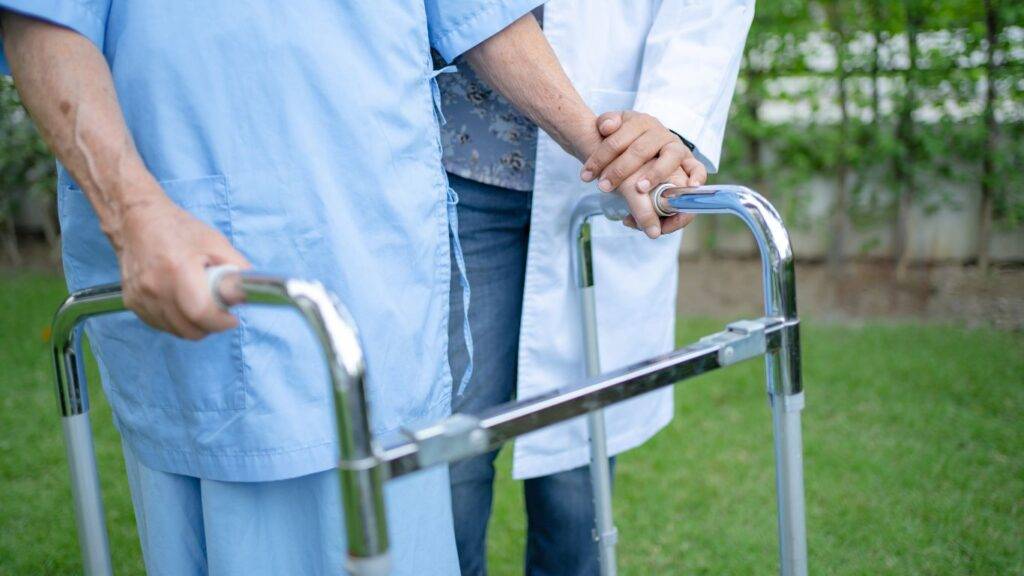
Maintaining mobility is a key factor in ensuring a vibrant and independent lifestyle for seniors. As we explore the realm of mobility aids, narrow walkers emerge as a practical and supportive solution for many. In this blog post, we will delve into the world of senior mobility, presenting the top 10 narrow walkers designed to provide ease, stability, and comfort for older adults.
Drive Medical Deluxe, Folding Walker
Compact and foldable, the Drive Medical Deluxe Folding Walker is a versatile choice. Its narrow frame allows for easy navigation through tight spaces, while features like a comfortable grip and sturdy design make it an excellent companion for daily walks.
Hugo Mobility Portable Rollator
Combining the benefits of a walker and a rollator, the Hugo Mobility Portable Rollator offers seniors stability and the option to sit and rest when needed. Its narrow profile ensures smooth movement, making it ideal for both indoor and outdoor use.
Medline Freedom Mobility Lightweight Folding Walker
Designed with convenience in mind, the Medline Freedom Mobility Walker features a lightweight frame and a narrow width for maneuverability. Its easy-fold mechanism enhances portability, making it a practical choice for seniors on the go.
Stander EZ Fold-N-Go Walker
The Stander EZ Fold-N-Go Walker is praised for its slim design and easy folding capabilities. Seniors can confidently navigate through doorways and hallways, and the walker conveniently folds for storage and transportation.
NOVA Traveler 3-Wheel Rollator Walker
The NOVA Traveler 3-Wheel Rollator Walker is an excellent choice for those seeking a narrower option with enhanced maneuverability. Its tri-wheel design allows seniors to navigate tight spaces with ease, offering both support and agility.
Invacare Dual Release Walker with 5″ Fixed Wheels
Featuring fixed wheels for smooth gliding, the Invacare Dual Release Walker is a reliable option. Its narrow design, coupled with sturdy construction, ensures seniors can move comfortably and confidently.
Carex Folding Walker for Seniors
Carex presents a Folding Walker designed to cater to the specific needs of seniors. With a narrow profile, comfortable grips, and an easy-fold mechanism, this walker combines practicality with user-friendly features.
Vive Folding Walker with Wheels
The Vive Folding Walker with Wheels strikes a balance between stability and mobility. Its narrow width allows seniors to navigate narrow spaces effortlessly, while the added convenience of wheels makes it a versatile choice for various terrains.
Essential Medical Supply W1250 Euro Style Rolling Walker
Crafted with a European touch, the Essential Medical Supply Euro Style Rolling Walker offers seniors a narrow yet sturdy mobility solution. Its sleek design, coupled with reliable support features, makes it an attractive and functional option.
Drive Medical Nitro Euro Style, Rollator Walker
Closing our list is the Drive Medical Nitro Euro Style, Rollator Walker. Combining style with functionality, this rollator features a narrow frame for easy maneuvering and provides seniors with a comfortable seat for resting when needed.
Selecting the right narrow walker is a key step toward enhancing senior mobility and promoting independence. The options presented in this list prioritize not only functionality and stability but also cater to the diverse needs of older adults. Whether navigating through tight spaces at home or strolling through the neighborhood, these top 10 narrow walkers are designed to make walking with ease a reality for seniors.
Tips and Tricks for Successful Aging

Aging is a natural part of life, and with the right mindset and lifestyle choices, it can be a fulfilling and vibrant journey. In this guide, we’ll explore a variety of tips and tricks that can contribute to successful aging, helping you embrace each stage with vitality and joy.
Prioritize Physical Well-Being
Successful aging often begins with taking care of your physical health. Regular exercise, even in moderate forms like walking or yoga, can promote flexibility, strength, and cardiovascular health. Additionally, maintaining a balanced diet rich in nutrients is crucial for sustained energy and overall well-being.
Cultivate Mental Sharpness
Keeping your mind active is key to successful aging. Engage in activities that challenge your brain, such as puzzles, reading, or learning a new skill. Continued mental stimulation can contribute to cognitive resilience and reduce the risk of age-related cognitive decline.
Stay Socially Connected
Social connections are integral to a fulfilling life at any age. Foster relationships with friends and family, participate in community activities or join clubs with shared interests. Social engagement not only provides emotional support but also contributes to a sense of belonging and purpose.
Prioritize Quality Sleep
Adequate and restful sleep is crucial for overall health and well-being. Establish a regular sleep routine, create a comfortable sleep environment, and address any sleep-related issues promptly. Quality sleep plays a significant role in mood regulation, cognitive function, and physical recovery.
Embrace a Positive Mindset
Cultivate a positive outlook on life. Focus on gratitude, practice mindfulness, and let go of unnecessary stressors. A positive mindset can influence your overall well-being and how you perceive and navigate the aging process.
Explore New Hobbies
Keep your life vibrant and interesting by exploring new hobbies and activities. Whether it’s painting, gardening, or learning a musical instrument, discovering and nurturing new interests can add excitement and purpose to your daily routine.
Regular Health Checkups
Stay proactive about your health by scheduling regular checkups with healthcare professionals. Early detection and management of health issues can significantly impact your overall quality of life as you age.
Financial Planning
Secure your financial future by planning and saving for retirement. A well-thought-out financial plan provides peace of mind and allows you to enjoy your golden years without unnecessary financial stress.
Practice Stress Management
Chronic stress can have detrimental effects on both physical and mental health. Incorporate stress management techniques into your routine, such as meditation, deep breathing exercises, or spending time in nature.
Maintain a Sense of Purpose
Finally, successful aging often involves maintaining a sense of purpose. Whether through volunteer work, mentoring, or pursuing personal goals, having a purpose can contribute to a fulfilling and meaningful life.
As you navigate the journey of aging, these tips and tricks can serve as a roadmap for successful and fulfilling golden years. Embrace the opportunities that each day brings, prioritize your well-being, and continue to grow and thrive as you age gracefully. Remember, successful aging is about living a life that brings you joy, satisfaction, and a sense of accomplishment.
Embracing Dentures: A Comprehensive Guide

Dentures have been a transformative solution for millions of individuals worldwide, offering a renewed sense of confidence and functionality for those experiencing tooth loss. Whether due to aging, dental issues, or accidents, the need for dentures has been prevalent across various demographics. In this comprehensive guide, we’ll delve into the world of dentures: exploring their types, the process of getting them, maintenance, and their impact on one’s lifestyle.
Understanding Dentures:
Types of Dentures
- Complete Dentures: Designed for individuals who have lost all their teeth, complete dentures replace an entire arch of teeth in either the upper or lower jaw.
- Partial Dentures: These are used when a patient still has some natural teeth remaining. Partial dentures fill the gaps created by missing teeth and prevent adjacent teeth from shifting.
- Immediate Dentures: Placed immediately after tooth extraction, these offer immediate aesthetics but may need adjustments as the mouth heals and reshapes.
- Implant-Supported Dentures: Secured by dental implants surgically placed in the jawbone, providing enhanced stability and functionality.
The Denture Fitting Process
- Consultation: A thorough examination and discussion with a dentist to determine the best type of denture for the individual’s needs.
- Impressions: Creating molds of the mouth to ensure a custom fit for the dentures.
- Trial Fitting: Trying on a prototype denture to check for fit, comfort, and appearance.
- Final Fitting: After adjustments, the final dentures are placed.
Adjusting to Dentures:
Initial Challenges
Speech: Adjusting to speaking with dentures may take time as the tongue adapts to the new oral structure.
Eating: Initially, eating certain foods might be challenging. Start with soft foods, gradually introducing harder textures as comfort increases.
Soreness: Minor irritation or soreness might occur as the mouth adjusts. Dentists can provide solutions to alleviate discomfort.
Long-Term Adaptation
With time and practice, most individuals adapt well to dentures, finding them to be comfortable and functional. Regular check-ups with the dentist are crucial to ensure proper fit and address any issues that may arise.
Maintaining Dentures:
Cleaning Routine
Brushing: Dentures should be brushed daily with a soft-bristled brush and non-abrasive denture cleanser to remove food particles and plaque.
Soaking: When not in use, dentures should be soaked in a denture cleaning solution or water to maintain their shape.
Handle with Care: Avoid using harsh cleaners or hot water that could damage dentures.
Regular Check-ups
Periodic visits to the dentist are essential to assess the fit of dentures, check for any oral health issues, and ensure overall oral hygiene.
Impact of Dentures:
Restored Confidence
For many, dentures provide a renewed sense of confidence by restoring a natural-looking smile and improving speech and eating abilities.
Improved Quality of Life
By restoring oral functionality, dentures enable individuals to enjoy a diverse diet and participate in social activities without feeling self-conscious about their teeth.
Dentures have been a transformative dental solution for people experiencing tooth loss, offering both functional and aesthetic benefits. Understanding the types of dentures, the fitting process, and how to maintain them properly is crucial for a successful denture experience. With proper care and regular check-ups, dentures can significantly improve one’s quality of life, restoring confidence and enabling a fulfilling lifestyle.
CBD Oil and Medicaid: Exploring Financial Support for Holistic Health

In recent years, the popularity of CBD oil has soared as more individuals seek natural alternatives for managing various health concerns. However, the cost of CBD products can be a barrier for many, leading to a crucial question: Will Medicaid pay for CBD oil? In this blog, we delve into the intersection of CBD oil and Medicaid, exploring the potential financial support for holistic health.
Understanding CBD Oil and its Benefits
CBD, or cannabidiol, is a compound derived from the cannabis plant known for its non-psychoactive properties. Research suggests that CBD may offer various health benefits, including relief from anxiety, pain, inflammation, and sleep issues. As interest in CBD continues to grow, individuals covered by Medicaid may wonder if this natural remedy aligns with their healthcare coverage.
The Landscape of Medicaid Coverage
Medicaid is a government program designed to provide healthcare coverage for low-income individuals and families. While Medicaid typically covers a range of medical services, the inclusion of CBD oil is not universally clear. State-specific regulations and policies play a significant role in determining whether Medicaid will cover the costs of CBD products.
Navigating State-Specific Regulations
As Medicaid is administered at the state level in the United States, the coverage of CBD oil can vary widely. Some states may have more progressive policies that recognize the potential health benefits of CBD, while others may have stricter regulations. Individuals must research and understand their specific state’s stance on CBD oil coverage under Medicaid.
Research and Advocacy
For those interested in exploring CBD oil as part of their holistic health regimen, proactive research and advocacy may be essential. Engaging with local policymakers, healthcare providers, and advocacy groups can help raise awareness about the potential benefits of CBD and encourage discussions about its inclusion in Medicaid coverage.
Patient Testimonials
Real-life experiences often speak volumes. In this blog, we share testimonials from individuals who have navigated the intersection of CBD oil and Medicaid. These firsthand accounts shed light on the challenges, successes, and impact of CBD oil on their overall well-being.
The exploration of CBD oil and Medicaid reveals a complex landscape influenced by state-specific regulations, policies, and individual healthcare needs. While some individuals may find support for their holistic health journey through Medicaid, others may face challenges. As the conversation surrounding CBD continues to evolve, individuals need to stay informed, engage in advocacy, and work towards a healthcare system that embraces holistic approaches to well-being.
Senior-Friendly Arm-Toning Workouts: Say Goodbye to Flabby Arms
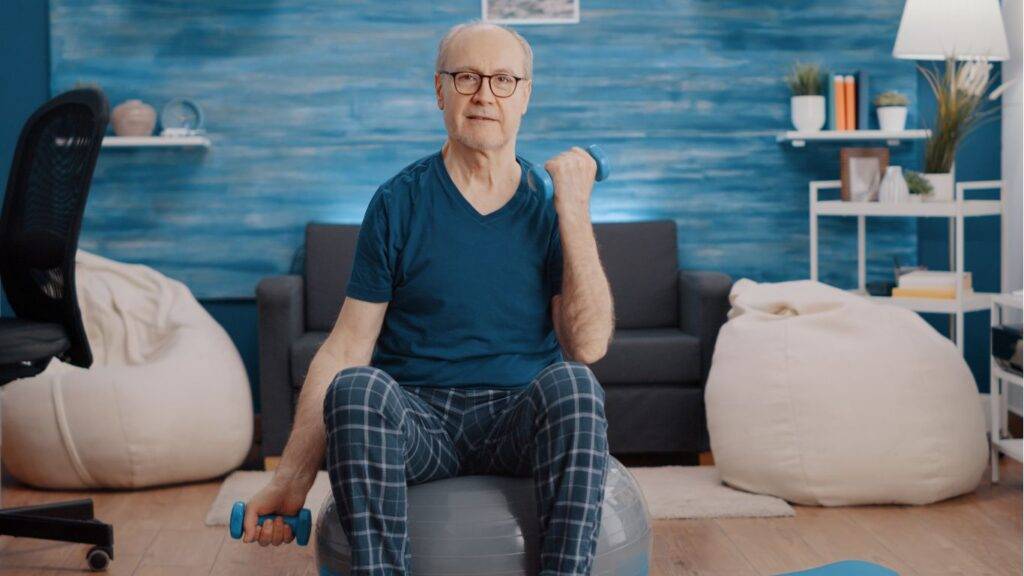
Aging gracefully often involves embracing a lifestyle that prioritizes physical health and well-being. For many seniors, the challenge of flabby arms can be a common concern. But fear not, because, in this blog, we’ll explore a series of senior-friendly arm-toning workouts that promise to bid farewell to flabbiness. It’s time to rediscover strength, flexibility, and confidence in every wave and gesture.
Understanding Senior Arm Fitness
As we age, maintaining muscle tone becomes increasingly important. Flabby arms can result from a variety of factors, including a decrease in muscle mass, skin changes, and a sedentary lifestyle. However, with the right exercises, seniors can effectively target and tone their arm muscles, promoting overall strength and vitality.
The Gentle Warm-up
Before diving into the main workout routine, it’s crucial to start with a gentle warm-up. Arm circles, wrist rotations, and shoulder rolls can help prepare the muscles for the exercises ahead, reducing the risk of strain or injury.
Senior-Friendly Arm Toning Exercises
Bicep Curls with Lightweight Resistance:
- Using light dumbbells or resistance bands, perform controlled bicep curls to strengthen the muscles in the front of the arms.
Tricep Dips:
- Seated on a stable chair, place your hands on the edge and lift your body up and down to engage and tone the triceps.
Overhead Arm Raises:
- Holding a light dumbbell in each hand, lift your arms overhead and then lower them slowly, engaging the muscles in the shoulders and upper arms.
Wall Push-Ups:
- Stand a comfortable distance from a wall, place your palms against it, and perform modified push-ups to target the chest, shoulders, and triceps.
Resistance Band Pull-Aparts:
- Holding a resistance band in front of you, pull it apart horizontally, engaging the muscles in the shoulders and upper back.
Flexibility and Stretching
Incorporating flexibility exercises is crucial for seniors. Arm stretches, including tricep and shoulder stretches, should be integrated into the routine to enhance the range of motion and prevent stiffness.
Staying Hydrated and Listening to Your Body
Throughout the workout, it’s essential to stay hydrated and pay attention to how your body responds to each exercise. If any movement causes discomfort or pain, it’s advisable to modify or skip that particular exercise.
By incorporating these senior-friendly arm-toning workouts into your routine, you’re taking proactive steps toward bidding farewell to flabby arms. Consistency is key, so make these exercises a part of your regular regimen to not only tone your arms but also enhance your overall strength and well-being. Embrace the journey to stronger, more resilient arms, and enjoy the physical and mental benefits that come with it. Say goodbye to flabbiness and hello to a more confident, active you.
Getting There Safely: A Guide to Medicaid Transportation

Transportation plays a pivotal role in ensuring that individuals can reach healthcare services promptly and safely. For those covered by Medicaid, the importance of reliable and secure transportation cannot be overstated. This blog serves as a comprehensive guide to understanding Medicaid Transportation, shedding light on its significance, benefits, and how it contributes to a safer and healthier community.
The Crucial Link between Transportation and Healthcare
Access to healthcare is a fundamental right, and transportation acts as a bridge connecting individuals to essential medical services. For Medicaid beneficiaries, who may face economic challenges, physical disabilities, or other barriers, Medicaid Transportation becomes a lifeline. This service is designed to overcome obstacles, ensuring that no one is left behind when it comes to accessing necessary healthcare.
Services Offered by Medicaid Transportation
Medicaid Transportation goes beyond merely providing a ride; it encompasses a range of services tailored to the diverse needs of individuals. Whether it’s non-emergency medical transportation routine check-ups, dialysis appointments, or specialized treatments, Medicaid Transportation strives to cater to the unique healthcare requirements of each beneficiary.
Ensuring Safety and Comfort
Safety is a top priority in Medicaid Transportation services. The vehicles used are equipped to accommodate individuals with various mobility challenges, ensuring a secure and comfortable journey. Trained and compassionate drivers play a crucial role in making the transportation experience positive, fostering an environment of trust and reliability.
Overcoming Transportation Barriers
Many individuals face barriers to transportation, which can lead to delayed or missed healthcare appointments. Medicaid Transportation aims to break down these barriers, fostering a truly inclusive healthcare system. By providing a reliable means of getting to and from medical facilities, Medicaid Transportation contributes to preventive care, timely treatments, and overall improved health outcomes.
Navigating the Medicaid Transportation Process
Understanding how to access Medicaid Transportation is key for beneficiaries. This blog guides readers through the process, from eligibility criteria to scheduling rides and the types of services available. Empowering individuals with this knowledge ensures that they can make the most of the transportation services provided by Medicaid.
In the pursuit of holistic healthcare, Medicaid Transportation emerges as a crucial component. It not only ensures that individuals can access necessary medical services but also emphasizes safety, comfort, and inclusivity. As we explore the realms of healthcare accessibility, let us recognize the transformative impact of Medicaid Transportation in facilitating a journey to wellness that is not just timely but also safe and secure. After all, getting there safely is not just about the destination—it’s about ensuring that the journey itself contributes positively to one’s health and well-being.
New York's Top Caregiver Groups: Building Supportive Communities Across the State

Caring for a loved one can be a rewarding yet challenging journey, and in New York, caregivers are finding solace and support through various caregiver groups. These groups offer a sense of community, understanding, and valuable resources to those selflessly providing care. In this blog, we’ll explore some of New York’s top caregiver groups, each playing a crucial role in fostering a network of support for caregivers across the state.
NYC Caregiver Support Network
Location: New York City
The NYC Caregiver Support Network is a robust community offering diverse resources and assistance for caregivers in the heart of the Big Apple. With regular meetings, workshops, and counseling services, this group is a lifeline for caregivers navigating the unique challenges of caregiving in a bustling metropolis.
Alzheimer’s Association – New York Chapter
Location: Statewide
The Alzheimer’s Association’s New York Chapter provides specialized support for caregivers dealing with Alzheimer’s and other forms of dementia. With local chapters and online resources, caregivers can access education, support groups, and a 24/7 helpline, creating a comprehensive network of assistance.
New York City Well Spouse Association
Location: New York City
The Well Spouse Association offers support specifically for spousal caregivers. Through monthly support group meetings, social events, and online forums, caregivers find understanding and companionship as they navigate the unique challenges of caring for a spouse.
CaringKind – The Heart of Alzheimer’s Caregiving
Location: New York City
Formerly known as the Alzheimer’s Association, New York City Chapter, CaringKind is dedicated to providing comprehensive support for Alzheimer’s caregivers. Their services include support groups, educational workshops, and personalized guidance to help caregivers cope with the demands of caring for individuals with Alzheimer’s disease.
AARP New York Caregiver Resource Center
Location: Statewide
AARP’s New York Caregiver Resource Center is a valuable hub for information and support. Caregivers can access online resources, attend workshops, and connect with local support groups. The center guides on legal, financial, and healthcare matters relevant to caregiving.
New York’s top caregiver groups are instrumental in creating a supportive environment for those undertaking the noble responsibility of caregiving. These groups not only offer practical assistance but also serve as emotional anchors, connecting caregivers with others who understand the unique challenges they face. If you’re a caregiver in New York, consider reaching out to these organizations to tap into the wealth of support they provide. Remember, you’re not alone—New York’s caregiver groups are here to help you navigate the journey with compassion, understanding, and resilience.
Essential Tips for Treating Diarrhea in the Elderly
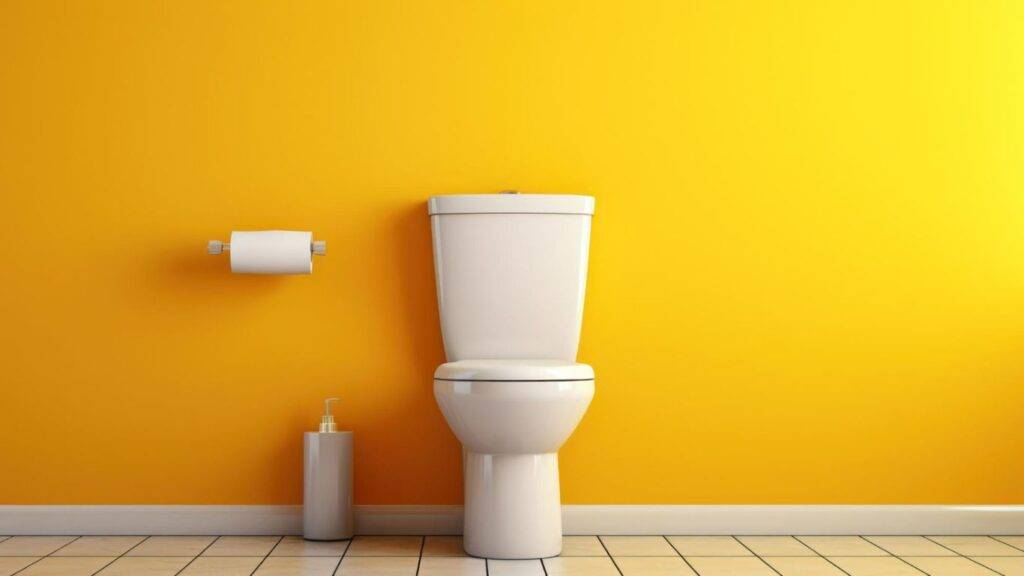
As we age, our bodies undergo various changes, and digestive health is no exception. Diarrhea in the elderly can be not only uncomfortable but also a potential sign of an underlying issue. In this blog, we’ll explore practical tips for treating diarrhea in the elderly, focusing on gentle and effective approaches to ensure their well-being.
Hydration is Key
Dehydration is a significant concern during bouts of diarrhea, especially for the elderly. Encourage increased fluid intake to prevent dehydration. Offer water, electrolyte-rich drinks, and clear broths at regular intervals. These can help replace lost fluids and maintain proper hydration levels.
BRAT Diet
The BRAT diet—Bananas, Rice, Applesauce, and Toast—can be beneficial for easing diarrhea. These easily digestible foods can help firm up stools and provide essential nutrients without causing additional stress on the digestive system.
Probiotics for Gut Health
Introducing probiotics into the elderly person’s diet can promote a healthy balance of gut bacteria. Probiotics, available in supplement form or through foods like yogurt, can aid in restoring the digestive system’s equilibrium.
Limit Dairy and Fatty Foods
Diarrhea can make the digestive system more sensitive. It’s advisable to temporarily limit the intake of dairy products and fatty foods, as they can exacerbate symptoms. Opt for easily digestible, low-fat alternatives until symptoms subside.
Medication Review
If the elderly individual is on medication, consult with their healthcare provider to review the medications. Some medications may contribute to digestive issues, and adjustments can be made to alleviate these side effects.
Maintain Good Hygiene
Diarrhea can increase the risk of skin irritation. Ensure good hygiene practices, including frequent diaper changes for those who require assistance. Use gentle cleansing products to avoid skin irritation and discomfort.
Seek Medical Advice
If diarrhea persists for more than a couple of days or is accompanied by other concerning symptoms, seek medical advice promptly. Persistent diarrhea may be a sign of an underlying health issue that requires professional attention.
Rest
Adequate rest is crucial for the body to recover. Encourage the elderly person to take it easy, get enough sleep, and allow their body the time it needs to heal.
Monitor Electrolyte Levels
Diarrhea can lead to electrolyte imbalances. Keep an eye on the elderly person’s symptoms, such as weakness or dizziness, which may indicate an electrolyte imbalance. If these symptoms occur, seek medical attention promptly.
Gradual Dietary Reintroduction
Once symptoms begin to subside, reintroduce regular foods gradually. Start with bland, easily digestible options and observe how the body responds before returning to a normal diet.
Treating diarrhea in the elderly requires a balanced approach that addresses the immediate symptoms while considering the unique needs of aging bodies. By implementing these tips, caregivers and family members can provide effective and compassionate care, promoting the well-being of their elderly loved ones during episodes of digestive discomfort. Always consult with healthcare professionals for personalized advice based on individual health conditions and circumstances.
Choosing the Right Urinary Incontinence Devices for Older Adults

Maintaining independence is a crucial aspect of aging gracefully, and for many older adults dealing with urinary incontinence, the right devices can make all the difference. This blog aims to empower both seniors and caregivers by providing practical insights into selecting the most suitable urinary incontinence devices for older adults, ensuring comfort, dignity, and continued independence.
Understanding Urinary Incontinence
Urinary incontinence is a common condition among older adults, affecting both men and women. It can be caused by various factors such as age, medical conditions, or weakened pelvic floor muscles. Fortunately, a range of devices is available to manage and cope with this condition, allowing individuals to lead an active and independent lifestyle.
Absorbent Products: Finding the Right Fit
Disposable Underwear: These discreet and absorbent undergarments are designed to provide protection against leaks. Choose the appropriate size and absorbency level for optimal comfort.
Adult Diapers: Offering a higher level of protection, adult diapers are suitable for those with more significant incontinence. Look for products with features such as odor control and a snug fit.
Protective Underpads: Maintaining Clean and Dry Spaces
Disposable Underpads: Placed on surfaces such as beds or chairs, disposable underpads absorb leaks and protect furniture. Opt for those with moisture-wicking capabilities for enhanced comfort.
Reusable Underpads: Environmentally friendly and cost-effective, these underpads can be washed and reused. Choose high-quality materials that provide both comfort and durability.
Catheters and Drainage Systems: Tailored Solutions for Specific Needs
External Catheters: Suitable for men, external catheters are worn over the penis to collect urine. Ensure a proper fit and consider skin-friendly materials for extended wear.
Indwelling Catheters: Inserted into the bladder, indwelling catheters require careful maintenance. Consult with healthcare professionals to determine if this option is suitable for the individual’s specific needs.
Personal Cleansing Products: Promoting Hygiene and Comfort
Wet Wipes and Cleansing Cloths: Keeping clean is essential for overall well-being. Stock up on gentle, fragrance-free wipes for convenient personal hygiene.
Barrier Creams: To prevent skin irritation, use barrier creams that create a protective layer. Choose products with moisturizing properties for added skin care.
Choosing the right urinary incontinence devices for older adults is a crucial step towards maintaining independence and quality of life. By understanding the individual’s needs, preferences, and the level of incontinence, caregivers and seniors can select devices that offer both practical solutions and emotional comfort. Remember, embracing independence involves finding the right tools that empower individuals to navigate life’s challenges with dignity and confidence.
Supporting Wellness: The Essential Contribution of PCS Aides to Depression Care

In the realm of mental health, where every moment matters, the role of Personal Care Service (PCS) aides becomes increasingly vital. These unsung heroes play a pivotal role in supporting wellness, especially when it comes to crafting effective depression care plans for individuals receiving home care services.
Understanding the PCS Aide Difference:
Comprehensive Assistance in Daily Living
PCS aides are trained professionals equipped to assist individuals in their daily activities. For someone grappling with depression, the seemingly mundane tasks can become overwhelming. From personal hygiene routines to household chores, PCS aides provide invaluable support, contributing to an environment conducive to mental well-being.
Emotional Support and Companionship
Beyond the practical aspects, PCS aides offer companionship and emotional support. Depression often leads to feelings of isolation, and having a compassionate presence can make a significant difference. The bond formed between the individual and their PCS aide can be a source of comfort, providing a safe space for open communication.
The Impact on Depression Care Plans:
Observation and Reporting
PCS aides act as the eyes and ears on the ground, closely monitoring the individual’s behavior and emotional well-being. They can detect subtle changes that may go unnoticed by others, promptly reporting to the healthcare team. This observation is crucial in tailoring and adjusting depression care plans to meet evolving needs.
Encouraging Engagement in Therapeutic Activities
Engaging in therapeutic activities is a cornerstone of depression care. PCS aides play a hands-on role in encouraging and facilitating these activities, ensuring that the individual remains involved in activities that bring joy and purpose, contributing to the overall wellness journey.
Realizing the Potential of PCS Aides in Depression Care:
Customized Care Plans
PCS aides contribute to the development and implementation of customized depression care plans. Their insights, gathered through daily interactions, enable healthcare professionals to create plans that are not only evidence-based but also tailored to the individual’s unique needs and preferences.
Collaboration with Healthcare Teams
Effective communication between PCS aides and healthcare teams is paramount. Regular updates and collaboration ensure that everyone involved in the individual’s care is on the same page. This synergy leads to a more cohesive and responsive approach to depression care.
PCS aides are integral partners in the holistic care of individuals battling depression. Their multifaceted contributions go beyond the physical realm, encompassing emotional support, observation, and active participation in the development of personalized care plans. As we acknowledge the essential contribution of PCS aides to depression care, it becomes evident that their role is transformative, fostering an environment where wellness can flourish. We recognize and celebrate the impact of PCS aids in supporting the mental health journey of those under our care. Together, we strive to create a nurturing space where individuals can thrive on the path to wellness.
Everything You Should Know About Advance Directives

In the realm of healthcare, being proactive about your medical journey is as crucial as receiving timely care. One powerful tool that empowers individuals to make informed decisions about their health is the Advance Directive. In this comprehensive guide, we delve into everything you should know about advanced directives and their significance in the context of homecare services.
Understanding Advance Directives: A Primer
What Are Advance Directives?
Advance Directives are legal documents that outline your healthcare preferences and decisions if you become unable to communicate or make decisions for yourself. These documents ensure that your wishes are respected and followed, providing a roadmap for your medical care.
The Components of Advance Directives
Typically, Advance Directives include a Living Will and a Healthcare Power of Attorney. A Living Will specifies your preferences for medical treatments, while a Healthcare Power of Attorney designates a trusted person to make healthcare decisions on your behalf.
The Relevance in Homecare Services:
Personalized Care Plans
For individuals receiving homecare services, Advance Directives play a pivotal role in shaping personalized care plans. Understanding the individual’s healthcare preferences allows homecare providers to offer care that aligns with the person’s values and goals.
Empowering the Individual
Advance Directives empower individuals to maintain control over their medical decisions even when faced with health challenges. This is especially pertinent in homecare settings, where the focus is on preserving the individual’s autonomy and dignity.
Navigating the Process:
Open Communication
Initiate open and honest conversations with your healthcare provider, family, and the designated healthcare decision-maker. Clear communication ensures that everyone involved is aware of your wishes, creating a collaborative approach to your healthcare.
Periodic Reviews and Updates
It’s essential to review and, if necessary, update your Advance Directives periodically. Changes in your health status, personal preferences, or shifts in your values may necessitate adjustments to ensure the document accurately reflects your wishes.
The Peace of Mind Factor:
Planning for the Unknown
Advance Directives provide peace of mind by allowing individuals to plan for unforeseen circumstances. Knowing that your healthcare preferences are documented and will be honored can alleviate stress and anxiety, fostering a more positive and focused approach to your well-being.
Understanding and implementing Advance Directives is a proactive step towards taking charge of your healthcare journey, especially in the context of homecare services. We recognize the importance of honoring individual choices and values. By incorporating Advance Directives into our care plans, we strive to provide personalized, respectful, and dignified care that aligns with your unique preferences. Empower yourself and your loved ones by embracing the foresight and assurance that Advance Directives offers on the path to well-managed, individualized homecare.
Diabetes Management in the Elderly

As we age, the challenges associated with diabetes can become more intricate, demanding a nuanced approach to care and management. Diabetes in the elderly requires tailored strategies that address not only the physical aspects of the condition but also the unique considerations that come with aging. In this article, we’ll explore practical data and evidence-backed insights to empower seniors and their caregivers to manage diabetes effectively in the golden years.
Understanding Diabetes in the Elderly
Before delving into management strategies, it’s crucial to recognize the specific challenges that diabetes presents in the elderly population. Factors such as reduced mobility, potential cognitive decline, and the presence of other health conditions can complicate diabetes management.
Regular Monitoring and Screenings
Establish a routine for regular blood sugar monitoring and screenings. Consistent monitoring provides valuable data for healthcare providers to adjust treatment plans as needed. Regular check-ups can also identify potential complications early on.
Medication Management
Work closely with healthcare professionals to manage medication effectively. Simplify medication regimens when possible, and consider the use of pill organizers or alarms to ensure timely doses. Regular medication reviews with healthcare providers can help optimize treatment plans.
Nutritional Considerations
Tailor nutrition plans to meet the specific needs of elderly individuals with diabetes. Emphasize a balanced diet rich in fiber, whole grains, and lean proteins. Collaborate with a registered dietitian to create a personalized meal plan that aligns with both health and dietary preferences.
Physical Activity and Mobility
Encourage regular physical activity within the individual’s capabilities. Whether it’s walking, chair exercises, or yoga, maintaining mobility is crucial for diabetes management. Consult with healthcare providers to design an exercise routine that suits the senior’s fitness level and health status.
Hydration and Skin Care
Aging skin can be more susceptible to infections and slow healing. Ensure proper hydration and promote good skin care practices to prevent complications. Regular foot checks are essential, as diabetes can impact circulation and nerve function.
Cognitive Health
For seniors facing cognitive challenges, implementing strategies for medication reminders and simplified meal plans is crucial. Engage in activities that stimulate mental well-being, and ensure that caregivers are aware of the specific needs related to diabetes management.
Emotional Support
Living with diabetes in the elderly years can be emotionally challenging. Foster open communication about feelings and concerns. Engage in activities that bring joy and provide a strong support system through family, friends, or support groups.
Effectively managing diabetes in the elderly involves a multifaceted approach that considers physical, nutritional, and emotional aspects. By incorporating these practical strategies into daily routines, seniors and their caregivers can navigate the complexities of diabetes with confidence. Regular communication with healthcare professionals, coupled with a commitment to a healthy lifestyle, is the key to achieving balance and enhancing the quality of life for elderly individuals living with diabetes.
Osteoporosis Management in the Elderly

Osteoporosis, a condition characterized by weakened bones, is particularly pertinent as individuals age. The elderly face unique challenges in managing osteoporosis, making it essential to adopt practical strategies that focus on prevention, lifestyle adjustments, and overall well-being. In this article, we’ll explore practical data and evidence-based insights to empower seniors and their caregivers in effectively managing osteoporosis in their golden years.
Understanding Osteoporosis in the Elderly
Before diving into management strategies, it’s crucial to grasp the nuances of osteoporosis in the elderly population. Aging bones tend to lose density, making them more susceptible to fractures. The impact of osteoporosis on mobility and quality of life emphasizes the need for proactive management.
Nutrition for Bone Health
Start with a foundation of proper nutrition. Ensure an adequate intake of calcium and vitamin D, crucial for maintaining bone density. Dairy products, leafy greens, and fortified foods should be incorporated into the diet. Consult with a registered dietitian to create a personalized nutrition plan.
Weight-Bearing Exercises
Engage in regular weight-bearing exercises to strengthen bones and improve balance. Activities like walking, hiking, and resistance training contribute to bone density and reduce the risk of fractures. Tailor exercise routines to individual capabilities and consider low-impact options for those with mobility issues.
Fall Prevention Measures
Minimizing the risk of falls is paramount for seniors with osteoporosis. Conduct a thorough home safety assessment, addressing potential hazards such as loose rugs and uneven surfaces. Install grab bars in bathrooms, ensure proper lighting, and encourage the use of supportive footwear.
Medication Management
Work closely with healthcare professionals to determine appropriate medications for osteoporosis management. Understand the benefits and potential risks of prescribed medications and adhere to the recommended treatment plan. Regular check-ins with healthcare providers are crucial to monitor progress.
Bone Density Testing
Regular bone density testing is essential for monitoring changes and assessing the effectiveness of treatment. Discuss the frequency of testing with healthcare providers to establish an appropriate schedule based on individual needs.
Lifestyle Modifications
Adopt lifestyle changes that support bone health. Quitting smoking and limiting alcohol intake positively impact bone density. Maintaining a healthy body weight is also beneficial for overall bone strength.
Emotional Support
Living with osteoporosis can be emotionally challenging, impacting one’s independence and confidence. Foster open communication about feelings and concerns. Engage in activities that promote mental well-being and consider joining support groups to share experiences.
Effectively managing osteoporosis in the elderly requires a holistic and proactive approach. By integrating these practical strategies into daily life, seniors and their caregivers can navigate the complexities of osteoporosis with resilience. Regular communication with healthcare professionals, coupled with a commitment to a bone-friendly lifestyle, is key to building and maintaining strong foundations for bone health in the golden years.
Practical Guidelines for Effective Elderly Hypertension Management

As we age, maintaining cardiovascular health becomes increasingly crucial, and hypertension, or high blood pressure, is a common concern among the elderly. Addressing this condition is pivotal for overall well-being. In this article, we’ll delve into practical guidelines backed by data to empower seniors and caregivers in effectively managing hypertension in the elderly.
Understanding Hypertension in the Elderly
Hypertension, or high blood pressure, is a prevalent health issue that can lead to serious complications, particularly in the elderly. Managing this condition involves a combination of lifestyle adjustments, regular monitoring, and collaboration with healthcare professionals.
Know Your Numbers
Understanding blood pressure readings is the first step. Normal blood pressure is generally considered to be around 120/80 mmHg. Regular monitoring at home can provide valuable insights into fluctuations, aiding in early intervention.
Maintain a Heart-Healthy Diet
Embrace a diet rich in fruits, vegetables, whole grains, and lean proteins. Limit sodium intake to promote heart health. The DASH (Dietary Approaches to Stop Hypertension) diet is a recognized approach beneficial for managing blood pressure.
Regular Exercise Routine
Engage in regular physical activity to promote cardiovascular health. Activities such as walking, swimming, or cycling can help regulate blood pressure. Consult with healthcare professionals to tailor an exercise routine to individual capabilities.
Medication Adherence
If prescribed medication, it’s crucial to adhere to the prescribed regimen. Set up a system to remember medications, such as using pill organizers or setting alarms. Regular follow-ups with healthcare providers help assess the effectiveness of the medication.
Limit Alcohol and Quit Smoking
Excessive alcohol consumption and smoking can contribute to elevated blood pressure. Limit alcohol intake and seek support to quit smoking. These lifestyle changes not only benefit heart health but also contribute to overall well-being.
Stress Management
Chronic stress can impact blood pressure. Incorporate stress-reducing activities into daily life, such as meditation, deep breathing exercises, or engaging in hobbies. Prioritizing mental well-being is integral to hypertension management.
Regular Check-ups
Schedule regular check-ups with healthcare professionals to monitor blood pressure and assess overall cardiovascular health. These check-ups provide an opportunity to adjust treatment plans if necessary and address any emerging concerns.
Weight Management
Maintaining a healthy weight is essential for hypertension management. Weight loss, if needed, can significantly contribute to lowering blood pressure. Consult with healthcare providers for personalized weight management strategies.
Stay Hydrated
Adequate hydration is crucial for overall health, including blood pressure regulation. Ensure a regular intake of water, and limit the consumption of sugary or caffeinated beverages.
Collaborate with Healthcare Professionals
Establish open communication with healthcare providers. Share concerns, discuss symptoms, and actively participate in the management plan. This collaborative approach ensures personalized and effective care.
Effectively managing hypertension in the elderly involves a holistic approach that addresses lifestyle factors, medication adherence, and regular monitoring. By incorporating these practical guidelines into daily life, seniors can take proactive steps toward heart health, enhancing their overall quality of life. Remember, individual needs may vary, so collaborating with healthcare professionals ensures a tailored approach for successful hypertension management in the elderly.
Top 7 Medicaid-Friendly Detox Centers in New York

Embarking on the journey to recovery from substance abuse is a courageous step, and having access to the right resources is crucial for a successful rehabilitation process. In the state of New York, where the need for addiction treatment is significant, finding Medicaid-friendly detox centers can make all the difference. In this article, we will explore seven top detox centers in New York that are not only dedicated to helping individuals overcome addiction but also accept Medicaid to ensure accessibility for those in need.
Hazelden Betty Ford Foundation – Tribeca Twelve (New York, NY):
Location: 22 Desbrosses St, New York, NY 10013
Overview: Hazelden Betty Ford Foundation is a renowned name in addiction treatment, and Tribeca Twelve is their facility in New York. With a focus on personalized care, they provide medically supervised detox services and accept Medicaid, making quality treatment accessible to a broader spectrum of individuals.
Mount Sinai West Addiction Institute (New York, NY):
Location: 1000 10th Ave, New York, NY 10019
Overview: Mount Sinai West Addiction Institute is part of the Mount Sinai Health System and offers comprehensive detoxification services. With a commitment to evidence-based care, they cater to diverse populations and accept Medicaid, ensuring that financial barriers do not hinder the path to recovery.
START Treatment & Recovery Centers (Brooklyn, NY):
Location: 22 Nevins St, Brooklyn, NY 11217
Overview: START Treatment & Recovery Centers are dedicated to providing addiction treatment services, and their Brooklyn location offers detox programs. Recognizing the importance of affordability, they accept Medicaid, making quality care accessible to individuals across different socio-economic backgrounds.
Arms Acres, Inc. (Carmel, NY):
Location: 75 Seminary Hill Rd, Carmel, NY 10512
Overview: Arms Acres is a leading provider of substance use disorder treatment, and their facility in Carmel, New York, offers detoxification services. With a commitment to inclusivity, Arms Acres accepts Medicaid, ensuring that individuals with diverse financial situations can receive the care they need.
Outreach Development Corporation (Long Island City, NY):
Location: 10-16 162nd St, Flushing, NY 11357
Overview: Outreach Development Corporation is a non-profit organization specializing in substance abuse treatment. The Long Island City location provides detox services and accepts Medicaid, exemplifying their dedication to reaching and helping as many people as possible in their journey toward recovery.
Project Renewal – Medically Supervised Outpatient Withdrawal (MSOW) Program (New York, NY):
Location: 8 East 3rd St, New York, NY 10003
Overview: Project Renewal is committed to helping homeless and low-income individuals with various health services, including addiction treatment. The MSOW Program in New York offers medically supervised outpatient detox and accepts Medicaid, addressing the unique needs of vulnerable populations.
Restorative Management Corp (Bronx, NY):
Location: 2021 Grand Concourse, Bronx, NY 10453
Overview: Restorative Management Corp focuses on providing culturally competent and comprehensive services for substance use disorders. Their Bronx location offers detox programs and accepts Medicaid, ensuring that individuals in the Bronx community have access to quality addiction treatment.
Overcoming substance abuse is a challenging journey, and having access to Medicaid-friendly detox centers in New York is a crucial factor in making this path more attainable. These top seven centers not only prioritize evidence-based care and personalized treatment but also ensure that financial constraints do not impede individuals from seeking the help they need. If you or someone you know is on the road to recovery, consider exploring these Medicaid-friendly detox centers in New York for a supportive and effective rehabilitation experience.
Wheelchairs: A Comprehensive Guide to Your Perfect Match
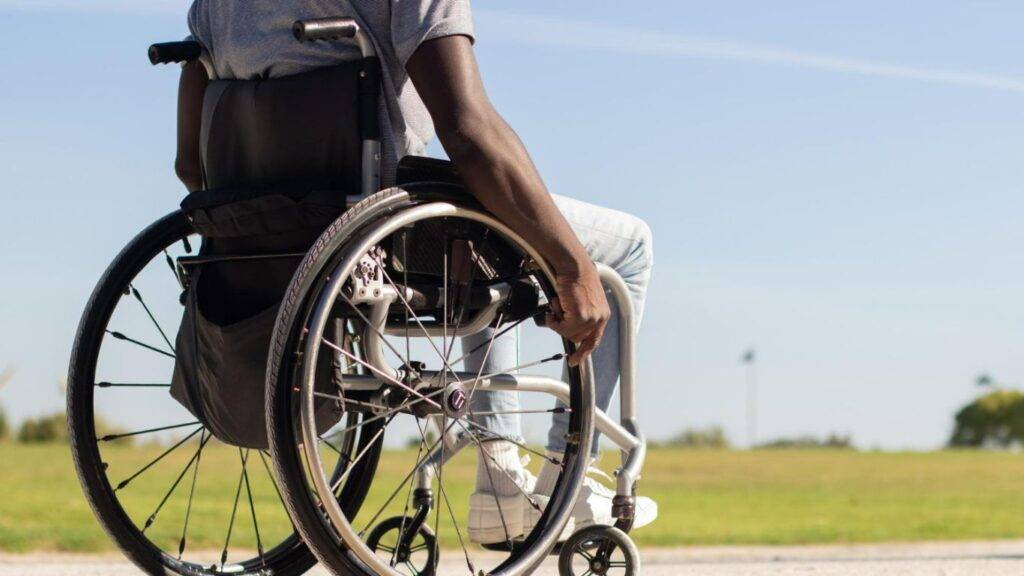
In the world of mobility aids, finding the perfect wheelchair is a crucial step toward regaining independence and comfort. Whether you’re a seasoned wheelchair user or are exploring options for a loved one, this comprehensive guide aims to provide practical insights and valuable data to help you make an informed decision.
Understanding Your Needs:
Before diving into the world of wheelchairs, it’s essential to assess individual needs and preferences. Consider factors such as mobility requirements, lifestyle, and any specific medical considerations. This initial self-reflection will serve as a solid foundation for identifying the most suitable wheelchair features.
Types of Wheelchairs:
Wheelchairs come in various types, each designed to cater to specific needs. Manual wheelchairs are propelled by the user or an attendant, offering simplicity and control. On the other hand, powered or electric wheelchairs provide enhanced mobility for those with limited upper body strength. Hybrid options, such as power-assisted wheelchairs, combine the best of both worlds.
Key Features to Consider:
Frame Material: Wheelchair frames are commonly made of aluminum, titanium, or steel. Each material has its own set of advantages, impacting factors like weight, durability, and cost.
Wheel Configuration: The number and arrangement of wheels significantly affect maneuverability. Front-wheel drive, mid-wheel drive, and rear-wheel drive configurations offer distinct advantages, so choose based on your specific lifestyle and needs.
Seating Options: Comfort is paramount. Explore different seat cushion materials, backrest designs, and adjustable features to ensure optimal support and posture.
Portability and Storage: Consider the weight and foldability of the wheelchair, especially if you lead an active lifestyle or travel frequently. Lightweight and collapsible models are often more convenient for transport and storage.
Terrain Compatibility: Think about the environments in which the wheelchair will be used most frequently. Some models are better suited for indoor use, while others are designed to handle rough outdoor terrain.
User Reviews and Testimonials:
Real-world experiences can offer valuable insights into the performance and reliability of different wheelchair models. Look for user reviews and testimonials to get a sense of the pros and cons of individuals who have firsthand experience with the wheelchair you’re considering.
Professional Guidance:
Consulting with healthcare professionals, physical therapists, and mobility experts can provide personalized recommendations based on your specific needs and health conditions. They can offer insights into factors like ergonomic design, pressure relief, and overall well-being.
Finding the perfect wheelchair is a personal journey that requires careful consideration of individual needs and preferences. By understanding the various types, and key features, and seeking guidance from professionals and user reviews, you can confidently choose a wheelchair that complements your lifestyle, enhances your mobility, and provides the comfort and independence you deserve.
Nurturing Our Elders: A Guide to Caring for Grandparents

In the intricate tapestry of family life, there is a unique and irreplaceable role played by grandparents. Their wisdom, love, and invaluable life experiences form the foundation upon which generations are built. As time marches on, it becomes increasingly crucial for us to reciprocate the care and support they once showered upon us. In this blog post, we delve into the art of nurturing our elders, offering a comprehensive guide to caring for grandparents.
Understanding Their Needs
To provide effective care, it’s essential to understand the unique needs of our grandparents. This involves recognizing both physical and emotional aspects. Many seniors may face health challenges, so a keen awareness of medical conditions, dietary restrictions, and mobility issues is vital. Equally important is acknowledging the emotional landscape, as seniors often grapple with loneliness or a sense of nostalgia.
Foster Communication
Open and honest communication forms the cornerstone of any meaningful relationship, and the one with our grandparents is no exception. Take the time to engage in conversations, listen to their stories, and share your own experiences. This not only strengthens the bond but also provides an opportunity to address any concerns they may have.
Create a Safe and Comfortable Environment
Making adjustments to the living environment can significantly enhance the well-being of our grandparents. Ensure that their living spaces are safe and comfortable, considering factors such as proper lighting, non-slip flooring, and easily accessible items. This not only prevents accidents but also contributes to a sense of security.
Encourage Independence
While providing support is crucial, it’s equally important to encourage independence. Identify tasks they can manage on their own and empower them to do so. This fosters a sense of autonomy and self-worth, promoting mental and emotional well-being.
Stay Informed about Medical Needs
Being well-informed about your grandparents’ medical needs is fundamental to providing effective care. Keep track of medications, doctor appointments, and any prescribed therapies. Regular health check-ups are essential, allowing for timely interventions if health issues arise.
Explore Social Opportunities
Combatting loneliness is a critical aspect of caring for grandparents. Encourage social interactions by arranging visits from friends and family, exploring community events, or enrolling them in clubs or classes that align with their interests. Social engagement contributes immensely to their mental and emotional health.
Seek Professional Assistance
Sometimes, the care needs of our grandparents may surpass our capabilities. In such instances, considering professional assistance, such as home healthcare services or assisted living facilities, becomes a viable option. It ensures that they receive the specialized care they require while allowing us to maintain a supportive role.
Caring for our grandparents is an act of gratitude, an acknowledgment of the love and wisdom they’ve bestowed upon us throughout the years. By understanding their needs, fostering communication, creating a safe environment, and encouraging independence, we can enrich their lives in meaningful ways. Let us embark on this journey of caregiving with compassion and dedication, ensuring that our elders continue to thrive in the warmth of our love and support.
Age-Defying Backs: Enhance Your Strength with these 12 Elderly-Focused Exercises
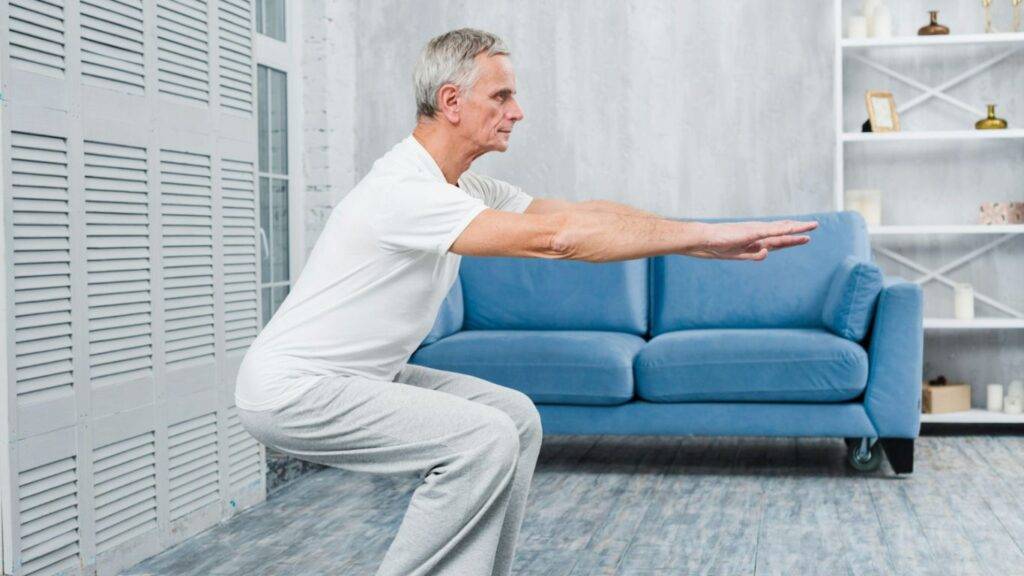
As we gracefully navigate the golden years, maintaining our physical health becomes increasingly crucial. One area that often requires attention is our back, a pillar of support that plays a central role in our overall well-being. Fortunately, with the right exercises, we can defy the effects of time and keep our backs strong and resilient. In this article, we’ll explore 12 targeted exercises designed specifically for seniors to enhance back strength and promote a vibrant, active lifestyle.
Gentle Spine Twist: Begin with a seated position and gently twist your torso to one side, holding for 15-30 seconds before switching to the other side. This exercise promotes flexibility and mobility in the spine, reducing stiffness.
Seated Row with Resistance Band: Utilize a resistance band to perform seated rows, strengthening the muscles of your upper back. This exercise is perfect for toning without putting undue stress on your joints.
Pelvic Tilts for Lumbar Support: Lying on your back, engage your core and tilt your pelvis upward, holding for a few seconds before releasing. This exercise aids in lumbar support and improves the stability of the lower back.
Wall Angels for Posture: Stand with your back against a wall and move your arms into a “W” shape. Slowly slide them up and down the wall, promoting good posture and targeting the muscles between your shoulder blades.
Aquatic Aerobics for Low-Impact Strength: Water aerobics provide a low-impact environment for exercising. Tailor movements to target your back muscles, enjoying the added benefit of buoyancy and resistance.
Chair Squats for Lower Back and Glutes: Safely perform squats using a sturdy chair for support. This exercise strengthens the lower back and glutes, enhancing stability and balance.
Cat-Cow Stretch for Flexibility: On your hands and knees, move between arching and rounding your back. The cat-cow stretch promotes flexibility in the spine and alleviates tension.
Thoracic Extension with a Foam Roller: Lie on a foam roller along your spine, supporting your head and hips. Gently extend backward, targeting the thoracic spine and improving mobility.
Modified Planks for Core and Back Strength: A modified plank, performed on your knees, engages the core and back muscles. This exercise helps build overall stability without the intensity of a full plank.
Leg Raises for Lower Back Endurance: While lying on your stomach, lift one leg at a time, engaging your lower back muscles. This exercise enhances endurance and promotes a strong lower back.
Standing Back Extensions: Stand with feet shoulder-width apart, hands on your lower back, and gently arch backward. This exercise strengthens the muscles along the spine and improves posture.
Tai Chi for Balance and Flexibility: Embrace the ancient practice of Tai Chi, known for its gentle, flowing movements. Tai Chi enhances balance, flexibility, and overall body awareness, benefiting your back health.
Remember to consult with your healthcare provider before beginning any new exercise routine, especially if you have pre-existing conditions. When performed consistently, These age-defying back exercises will enhance your strength and contribute to a more active and fulfilling senior lifestyle. Let’s embrace the journey of aging with resilience, vitality, and a strong, age-defying back.
The 10 Most Comfortable Recliners for Senior Living
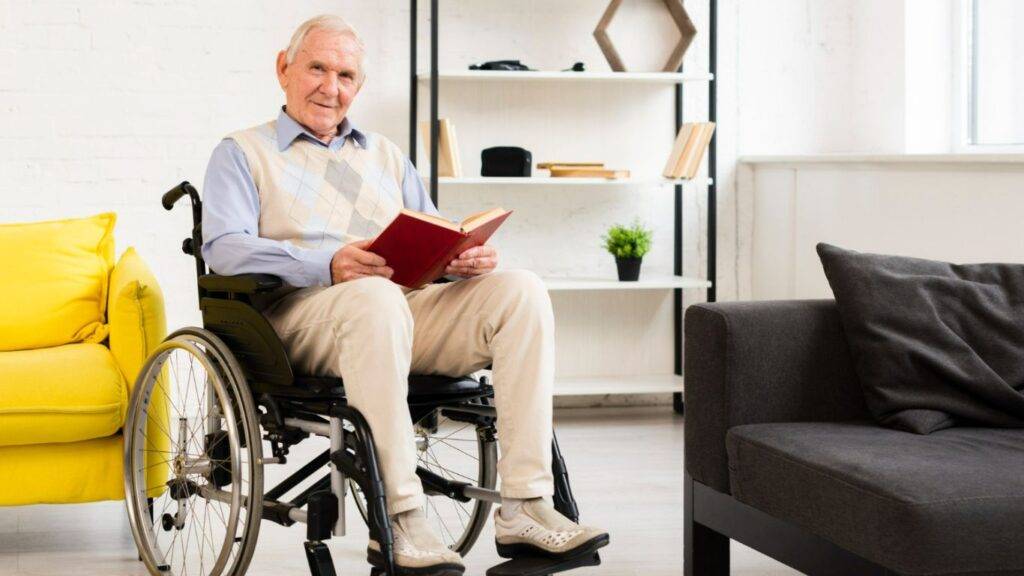
The golden years deserve comfort and relaxation above all else. The need for suitable furniture tailored to the needs of seniors becomes essential. With changing needs and preferences, seniors often require furniture that offers maximum comfort and user-friendly features.
Importance of Comfortable Seating for Seniors
Comfortable seating options are critical for seniors. They spend a considerable amount of time seated – reading, watching television, or simply relaxing. Quality seating can help alleviate common issues like back pain and joint aches. A firm yet comfortable chair is a godsend for seniors.
How Recliners Can Enhance Senior Living
Recliners, in particular, can significantly enhance the comfort quotient in senior living. With their adjustable seating positions, easy operation, and added features such as heat and massage functions, they can truly deliver a satisfying experience. The best recliners for elderly individuals are built with their specific needs in mind, making them the best choice for senior living furniture.
Factors to Consider When Choosing a Recliner for Senior Living
Choosing the right recliner for seniors is more than just looking for the softest seat. There are several factors to consider to ensure maximum comfort and convenience. Understanding these factors can make the selection process less daunting and more efficient.
Size and Dimensions
When shopping for a recliner, pay close attention to the size and dimensions. The recliner should be large enough to accommodate the person without being too cumbersome. Additionally, it must fit appropriately in the space designated for it in your home.
Ease of Use and Control Mechanisms
Seniors might struggle with complicated control mechanisms. Choose a recliner with simple, easy-to-use controls. Automatic recliners might be a good option, but ensure the buttons and levers are within easy reach and not hard to operate.
Support and Stability Features
Support and stability are crucial factors for senior recliners. Look for designs that offer:
- Lower back support for prolonged sitting
- Solid, non-slip base to prevent accidents
- High-density foam or similar materials for maximum comfort and support.
Understanding these factors will undoubtedly help you choose the most comfortable recliner for senior living.
Top 10 Recliners for Senior
In this part of our guide on senior living furniture, we’re taking a closer look at the most comfortable recliners for seniors. Let’s delve into the 10 best recliners that promise to offer a combination of comfort, stability, and elegance.
La-Z-Boy Niagara Rocker Recliner:
Features and Specifications
The Niagara Rocker Recliner by La-Z-Boy features a tall back design for optimal neck and back support. It also has plush cushioning and a locking footrest for added comfort.
- Tall back design
- Locking footrest
- 3-position locking mechanism
- Soft and durable fabric
Benefits for Seniors
Thanks to its high back, seniors can comfortably rest their necks and backs while sitting. The locking footrest and 3-position locking mechanism helps to adjust the recliner for maximum comfort and stability.
Ashley Furniture Yandel Power Lift Recliner:
Features and Specifications
The Yandel Power Lift Recliner from Ashley Furniture includes an easy-to-use remote that controls both reclining and lifting features. The recliner also has thick cushions and faux leather upholstery.
- Power lift and recline control
- Thick cushions
- Faux leather upholstery
- 300lb weight capacity
Benefits for Seniors
The power lift and recline feature make it easier for seniors to get in and out of the recliner, reducing strain on their legs or back. The heavy padding provides a comfortable seating experience, while the faux leather offers easy cleaning and maintenance.
Mcombo Electric Power Lift Recliner Chair:
Features and specifications
The Mcombo Electric Power Lift Recliner Chair offers a power lift function, massaging and heating elements, and a side pocket for storage.
- Power lift function
- 8-point massage system with heating
- High-quality PU leather
Benefits for seniors
The power lift function is ideal for seniors facing mobility issues. The massage and heating system enhances comfort, providing relief for aching muscles and joints.
Positive Posture Cafe Zero Gravity Recliner:
Features and Specifications
This recliner has a zero gravity feature, meaning it reclines to a position where your feet are level with your heart, reducing strain on your spine. It has a soft leather construction and ergonomic design.
- Zero gravity feature
- Ergonomic design
- Easy touch controls
Benefits for Seniors
It offers relief to individuals with back problems and circulatory issues. Its easy-to-use controls make it a senior-friendly recliner.
Pulaski Power Home Theater Recliner:
Features and Specifications
This recliner from Pulaski is a multi-feature recliner with a power swivel capability, an adjustable headrest, and a built-in USB charging port.
- Power swivel and recline capability
- Swivel table accessory
- USB port
Benefits for Seniors
The power swivel makes it easy for seniors to redirect the chair without straining. A charging point within reach promotes convenience.
Raymour & Flanigan Bromley Recliner Chair:
Features and Specifications
The Bromley Recliner Chair boasts an elegant design with plush cushions. It features a push-back reclining feature and comes in a variety of colors.
- High back design
- Easy-to-use recline mechanism
- Multiple color options
Benefits for Seniors
The high-back design accommodates seniors of different heights. The simple reclining mechanism eases operation, making reclining hassle-free.
Catnapper Deluxe Soother Power Lift Lounger Recliner:
Features and specifications
This lounger recliner comes with power lift and recline features, sturdy construction, and a heating feature.
- Power lift and recline
- Heating feature
- Plush cushions
Benefits for seniors
The power lift function makes it easier for seniors to stand up from the chair, while the heating feature can provide comfort during colder months.
Homall Electric Power Lift Recliner:
Features and specifications
This recliner features a power lift mechanism, a TUV-certified motor, and a remote control system.
- Power lift mechanism
- Durable upholstery
- Remote control operation
Benefits for seniors
The power lift mechanism helps seniors get up from the recliner with less effort. The remote control operation makes adjustments easy.
CANMOV Power Lift Recliner Chair:
Features and specifications
Features of this recliner include a power lift mechanism, a sturdy frame, and an overstuffed pillow design for added support.
- Power lift mechanism
- High-density sponge padding
- USB charging port
Benefits for seniors
The power lift is beneficial for seniors with mobility issues. The pillow design provides additional lumbar support, improving comfort for those with back problems.
Lifestyle Power Recliner:
Features and specifications
Some key highlights of this recliner include a one-touch power control, comfortable upholstery, and a generous seating area.
- One-touch power control
- Wall hugger design
- Generously sized seating area
Benefits for seniors
The one-touch power control simplifies the operation, while the wall-hugger design saves space. The large seating area can accommodate seniors of all sizes.
As we conclude our in-depth look at these fantastic recliners for seniors, we hope you find this guide useful in finding a comfortable recliner that fits perfectly into your or a loved one’s senior living space. Remember, the best recliners for elderly individuals provide excellent support, comfort, and ease of use. Your perfect fit is surely among these top 10 recliners for seniors. Happy reclining.
Selecting the right recliner for seniors is about comfort and functionality, but it also has a lot to do with personal preference. With our suggested options, you should be able to find something suitable that ticks all the boxes.
The Vital Role of Skin Health for Seniors

As we gracefully navigate the journey of aging, certain aspects of our health often take center stage. Among these, the significance of skin health cannot be overstated. Our skin, the body’s largest organ, plays a crucial role in maintaining overall well-being, particularly as we enter our senior years. In this exploration, we delve into the vital role of skin health for seniors and the proactive steps one can take to promote and preserve it.
Barrier Against the Elements
The skin acts as a protective barrier, shielding the body from external threats such as bacteria, viruses, and environmental pollutants. For seniors, whose immune systems may not be as robust as in earlier years, maintaining skin integrity becomes paramount in preventing infections and promoting overall health.
Regulation of Body Temperature
As we age, the body’s natural ability to regulate temperature may diminish. Healthy skin plays a pivotal role in this process, helping to dissipate heat through perspiration and retaining warmth when needed. Proper skin care supports this regulatory function, ensuring seniors can adapt to varying temperatures comfortably.
Sensory Perception and Interaction
Skin is integral to our sense of touch, fostering connection and interaction with the world around us. For seniors, who may experience changes in sensory perception, maintaining skin health is essential for preserving the tactile experiences that contribute to a fulfilling and engaged life.
Prevention of Skin Conditions
Seniors are more susceptible to certain skin conditions, including dryness, itching, and bruising. Regular moisturizing, gentle cleansing, and protection from harsh weather can go a long way in preventing these issues and promoting overall comfort.
Psychological Well-being
The appearance and feel of our skin can significantly impact our mental and emotional well-being. Seniors who prioritize skin health often report feeling more confident and positive about their overall appearance, contributing to a healthier mindset and improved quality of life.
Early Detection of Health Issues
Changes in the skin can sometimes serve as early indicators of underlying health issues. Regular self-examinations and professional dermatological check-ups can help detect potential concerns early on, allowing for prompt intervention and improved outcomes.
Nutrition and Hydration
Proper nutrition and hydration are cornerstones of healthy skin. Seniors should focus on a balanced diet rich in vitamins and minerals, staying adequately hydrated to support skin elasticity and vitality.
Sun Protection
The aging process can make the skin more susceptible to the harmful effects of ultraviolet (UV) radiation. Seniors should be vigilant about sun protection, using sunscreen, wearing protective clothing, and seeking shade to prevent sun damage and reduce the risk of skin cancer.
In the tapestry of aging gracefully, the role of skin health is both intricate and profound. Seniors who prioritize skin care not only enhance their physical well-being but also contribute to a positive and confident approach to the aging process. Through mindful attention to skin health, we empower ourselves to navigate the golden years with resilience, comfort, and a radiant sense of well-being.
Discover the Top 12 Hip Stretches Tailored for Seniors
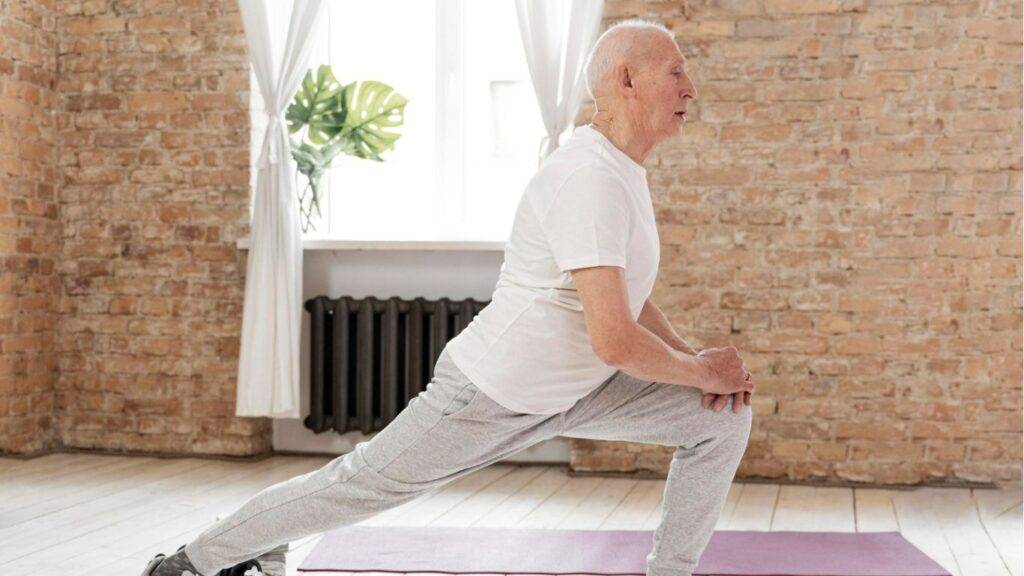
As we age, maintaining flexibility and mobility becomes increasingly important for overall well-being. The hips, in particular, play a crucial role in our day-to-day movements and ensuring their flexibility is key to preserving an active and independent lifestyle. In this blog post, we will explore the top 12 hip stretches specifically designed for seniors, offering a gateway to enhanced flexibility and improved joint health.
Hip Flexor Stretch: Opening the Gateway to Mobility
Start with a classic hip flexor stretch to alleviate tightness and improve range of motion. This foundational stretch targets the muscles at the front of the hip, promoting flexibility and reducing discomfort.
Piriformis Stretch: Easing Tension in the Glutes
Seniors often experience tension in the glutes, affecting the hips. Discover how a targeted piriformis stretch can release this tension, providing relief and promoting greater ease of movement.
Seated Leg Cross Stretch: Gentle Hip Opening
Perfect for seniors, the seated leg cross stretch is a gentle yet effective way to open up the hips. Explore the correct technique to maximize its benefits and enhance flexibility.
Butterfly Stretch: Embracing Graceful Movements
Unlock your inner flexibility with the butterfly stretch. This timeless exercise not only opens the hips but also encourages a sense of calm and relaxation.
Supine Hip Extension: Strengthening the Hip Muscles
Learn how to perform a supine hip extension to strengthen the hip muscles. This exercise not only enhances flexibility but also contributes to overall hip joint stability.
Knee-to-Chest Stretch: A Soothing Release for Lower Back and Hips
Seniors often experience lower back discomfort, and the knee-to-chest stretch provides a gentle release, simultaneously targeting the hips and lower back.
Standing Hip Circles: Dynamic Movement for Hip Health
Explore the benefits of standing hip circles—a dynamic exercise that promotes fluid movement in the hips, enhancing circulation and flexibility.
Lunging Hip Flexor Stretch: Mobilizing the Hips with Precision
Discover the proper technique for a lunging hip flexor stretch, designed to target and release tension in the hip flexor muscles, contributing to improved mobility.
Side-Lying Clamshell: Activating Hip Abductors
Strengthening the hip abductors is crucial for stability. Learn how to perform the side-lying clamshell to enhance hip abductor strength and flexibility.
Standing Quadriceps Stretch: Balancing Flexibility and Stability
Maintaining balance is key for seniors, and the standing quadriceps stretch not only improves flexibility but also contributes to better stability in the hips and legs.
Chair Hip Flexor Stretch: Seated Comfort with Maximum Benefits
For seniors who prefer a seated position, the chair hip flexor stretch offers a comfortable yet effective way to release tension and enhance hip flexibility.
Gentle Yoga Hip Openers: Embracing Mind-Body Connection
Wrap up your hip-stretching routine with gentle yoga hip openers, fostering a mind-body connection that promotes relaxation and improved flexibility.
Prioritizing hip health is a gift to oneself, ensuring a more comfortable and active journey through the golden years. By incorporating these top 12 hip stretches into your routine, you’re not just enhancing flexibility—you’re investing in your overall well-being and embracing a lifestyle of movement and vitality. So, let’s embark on this journey together and unlock the full potential of senior mobility.
Senior Care Essentials: Practical Tips for Bathing and Assisting the Elderly

As we embrace the privilege of caring for our elderly loved ones, certain daily activities, such as bathing, require a thoughtful and gentle approach. Bathing is not just a physical necessity; it is an opportunity to provide comfort, maintain hygiene, and ensure our seniors’ well-being. In this blog post, we’ll explore practical tips and essential advice for bathing and assisting the elderly, fostering a caring and respectful experience for both caregivers and seniors.
Create a Comfortable Environment
Begin by setting the stage for a positive bathing experience. Ensure the bathroom is warm, well-lit, and free from unnecessary clutter. A comfortable environment helps alleviate anxiety and promotes relaxation.
Establish a Routine
Consistency is key when it comes to senior care. Establishing a regular bathing routine provides a sense of predictability and security for elderly individuals, making the experience more comfortable for them.
Maintain Communication
Open and clear communication is vital. Before initiating the bathing process, discuss the plan with the senior, explaining each step and allowing them to express their preferences. This collaborative approach fosters a sense of autonomy and respect.
Adapt to Individual Needs
Every senior is unique, and their needs may vary. Be attentive to any physical limitations or discomfort they may have. Adapt your approach, whether it involves using assistive devices, adjusting water temperature, or allowing more time for the process.
Use Supportive Equipment
Invest in equipment that facilitates a safe and comfortable bathing experience. Grab bars, non-slip mats, and handheld showerheads can significantly enhance the bathing environment and provide additional support.
Opt for Sponge Baths as Needed
For seniors who may have difficulty with traditional baths, sponge baths can be a suitable alternative. This method allows for a thorough cleansing while minimizing physical strain.
Prioritize Safety
Safety should always be a top priority. Ensure that the bathing area is well-lit, maintain a stable water temperature, and be vigilant about preventing slips and falls. Always have towels and clothing within easy reach.
Respect Modesty and Privacy
Maintain a respectful and considerate attitude towards the senior’s modesty and privacy. Use towels strategically to cover areas not being washed and offer privacy screens if needed.
Encourage Independence
Foster a sense of independence by allowing the seniors to participate in the bathing process to the best of their ability. Provide support as needed, and encourage them to maintain personal hygiene routines as much as possible.
Post-Bathing Care
After the bath, ensure the senior is comfortably dried and dressed. Pay attention to skincare, particularly in areas prone to dryness. This post-bathing care routine contributes to overall comfort and well-being.
Bathing is more than a practical task; it is an opportunity for connection and care. By incorporating these practical tips into your bathing routine, you can transform this daily activity into a positive and respectful experience for both caregivers and the elderly. Senior care is a journey filled with compassion, and ensuring a comfortable and dignified bathing experience is a significant step towards providing the care our elders truly deserve.
